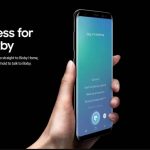What’s The Real Value Of Mobile?
Columnist Allan Haims notes that mobile’s role in driving retail conversions has long been underrepresented and illustrates ways to better understand its value.
Establishing proper attribution for mobile’s role in influencing and driving offline conversions is a challenge for the brick-and-mortar retail marketplace.
This is often due to online forms of measurement such as click-throughs being used as the primary way to also measure mobile conversions, which are often invalid or unreliable and result in a significant attribution gap.
Driving this point home, a recent study by Deloitte about digital’s influence on in-store sales showed that consumers using digital tools before and during their in-store shopping experiences – most often on smartphones – convert at a 40 percent higher rate than those who don’t engage with digital.
However, this digital influence isn’t captured as a transaction driver from an attribution perspective.
The Deloitte study also notes that 84% of consumers use their mobile device while shopping in stores. Ultimately, shoppers are less likely to complete purchases on mobile devices if they are physically in a store, but the channel is clearly integral to bringing transactions to fruition.
Mobile’s impact on driving sales is far greater than reported and accounts for more in-depth activity throughout consumers’ path to purchase. Retail companies should evaluate how to best leverage and measure the mobile opportunity through in-store conversion.
Authenticate Mobile Users
One of the key attribution benefits of online channels is that retailers can use persistent unique IDs or cookies to track shoppers along their path-to-purchase from initial research to adding items to a shopping cart and ultimately completing a transaction.
This data is vital to understanding consumers’ research patterns and preferences and plays a pivotal role in marketing strategy decisions.
The lack of this same accurate measurement mechanisms on mobile has presented major challenges to tracking shopper behavior; however, there are other ways to follow mobile shoppers – namely through authenticating users when they sign onto retail Wi-Fi networks to more closely pinpoint their physical location and monitor consumer usage of retailers’ branded mobile apps.
When consumers access and accept the terms and conditions of Wi-Fi networks, they are engaging with the network and thus revealing themselves as pre-qualified sales prospects that are interested in accessing promotions.
Whether in a mall or an individual store like Target or Petco, mobile applications can gain deeper insights into shoppers’ mobile behaviors, including pre-purchase research patterns, the number of consumers accessing various types of deals and other relevant behavioral data.
Combine Digital And Offline Strategies
The concept of omni-channel marketing isn’t new, but the ways in which it is executed are evolving significantly.
Traditional media such as TV, radio and newspaper have long been used as part of a greater strategy to influence purchase decisions, but bridging these touchpoints with online and mobile marketing strategies is critical.
Why? Mobile has the power to reach consumers during the last moments of a purchase decision. That makes it the perfect medium for encouraging impulse purchases close to the point of sale — for example, via flash sales or deals from a nearby retailer.
Another example of connecting the omni-channel dots is the resurgence in retail catalog usage, both for digital and print. Many consumers are using their tablets or smartphones to access catalogs, then visiting the store to see the product before making a purchase, so it is critical to connect these consumer engagement touchpoints to understand which vehicles are truly influencing purchase decisions.
Consumers using digital and mobile channels to pre-order retail items and then visiting the store to pick them up – often the same day — is another growing trend.
This offering conveniently helps consumers reduce the amount of time spent looking for specific items but still brings them into a store – where ~93 percent of retail purchases occur, per the U.S. Census – and therefore creates more opportunities to generate impulse purchases.
However, these last-minute purchases may also be driven by onsite mobile app usage once consumers are on premises, so marketers should be sure to track purchase activity beyond the in-store pickup designation.
Leverage Real-Time Personalization
Today’s consumers are asking retailers for more in-the-moment personalized offers. They are opting into loyalty programs that enable retailers to build brand value and create tailored offers based on preferences, past purchases, customer reviews, social media details and other helpful profile information.
Delivered via mobile and digital channels, these promotions not only help drive customers into stores but also help guide in-store purchase decisions and give retailers visibility into mobile’s role in the consumer’s purchase cycle.
For example, a cosmetics retailer may proactively send special promotions for events that require a physical presence, such as a make-up event, via their branded or mall app. This promotion would be based on the individual’s purchase history and other demographic information.
Taking it a step further, if the retailer has employed location-based technologies, such as iBeacons or Wi-Fi based geofencing technology, they can incentivize shoppers to access timely promotions via their smartphones while they are nearby or in the store.
Final Thoughts
The value of mobile in driving retail conversion opportunities has long been underrepresented; however, there are now ways to accurately track its heavy influence on purchase decisions.
By engaging directly with mobile shoppers via Wi-Fi networks, executing omni-channel strategies and delivering targeted promotions through loyalty programs, retailers have an immense opportunity to deepen their customer relationships and gain further wallet share.About The Author
Marketing Land – Internet Marketing News, Strategies & Tips
(183)















